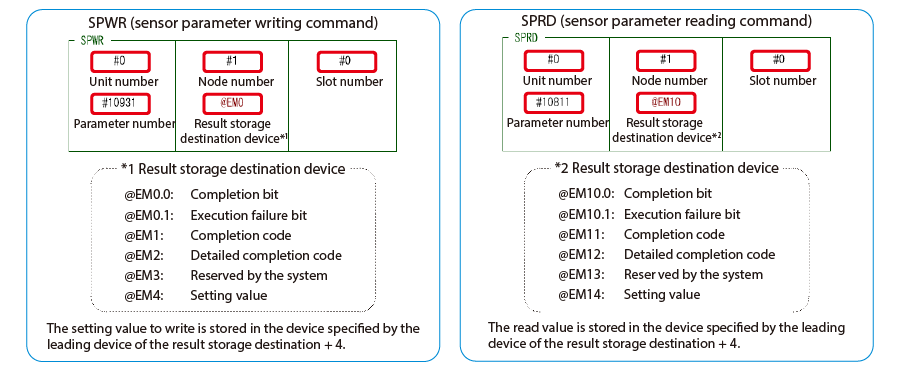KV-X Series × IX Series
EtherNet/IP™ Connection Guide
Return to KV Series Connection Guide
KV-X Series × IX Series EtherNet/IP™ Connection Guide
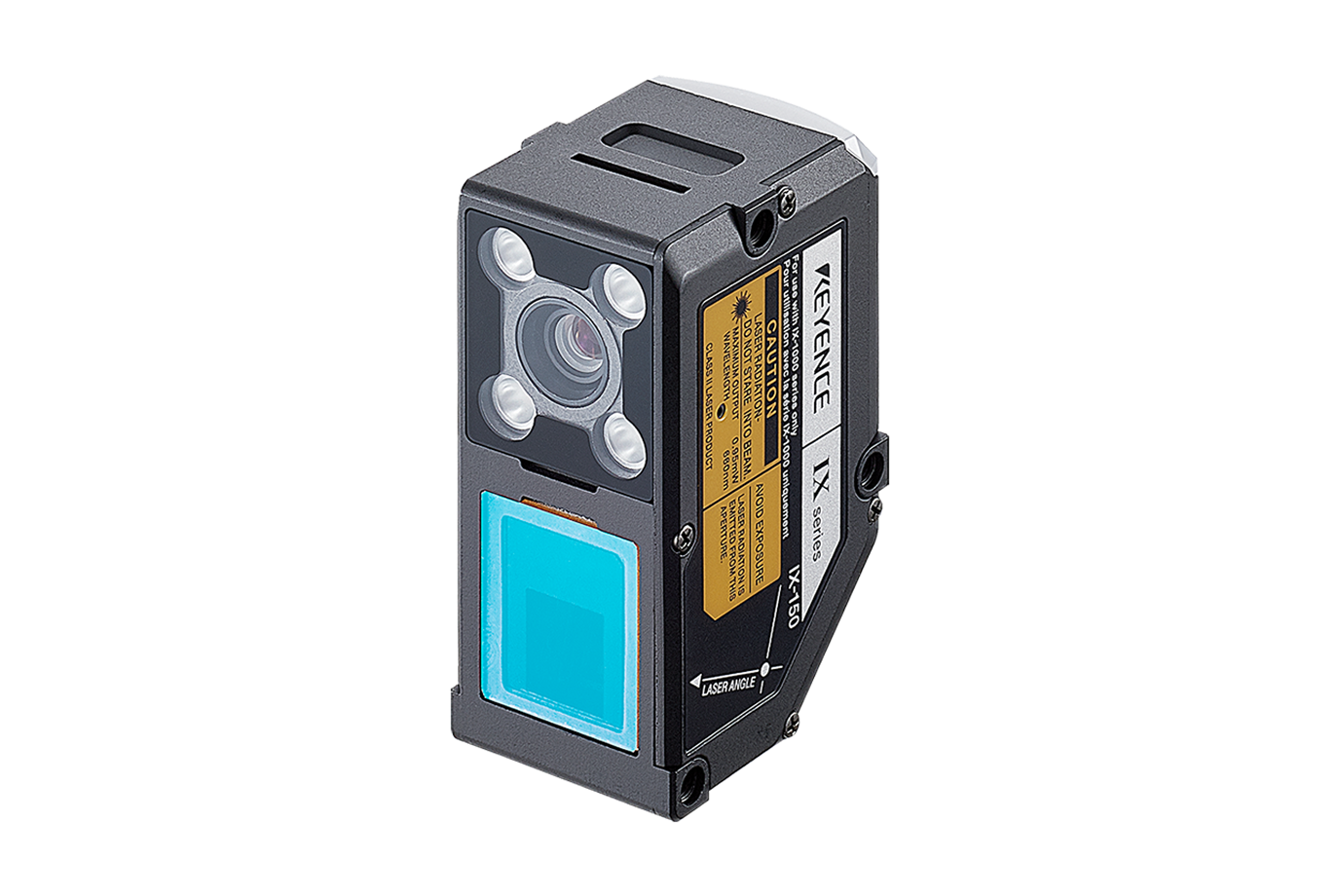
IX Series

Contents
Step 1 : Equipment Required for Connections
This guide explains communication between the KV Series and the IX Series.
When using other units, read this guide with those other units in mind.
Prepare the following equipment.

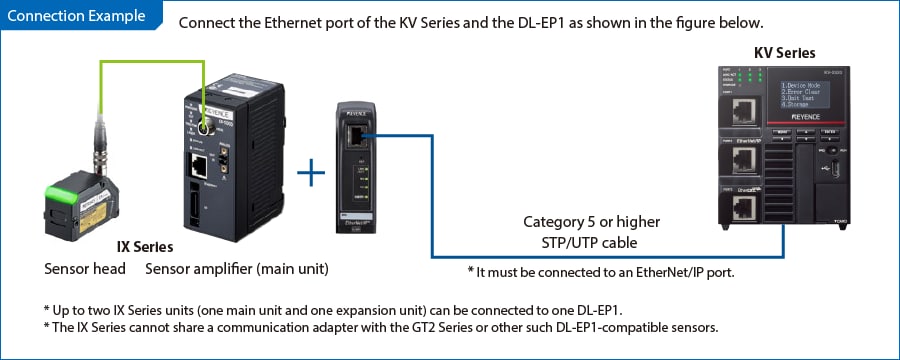
Step 2 : Configuring IX Series [EtherNet/IP] Settings
Use IX-Navigator to configure the settings of the IX Series. The explanation in this section uses the example of a case in which the PC and the IX Series are connected with a LAN cable in a 1:1 configuration and the IP address is set automatically. For details on establishing a connection by specifying the IP address, see One Point.
1. Connect the Ethernet ports on the PC and the IX Series (the sensor amplifier) with a LAN cable, and then start IX-Navigator. The [Activation Menu] dialog box is displayed. Select “1 unit,” and then click [Direct Connection] followed by [Connect].
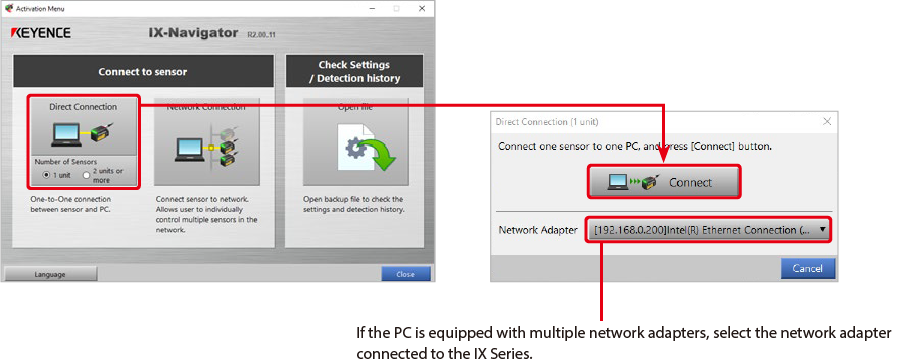
2. The sensor operation screen is displayed. If the sensor is running, click [Program]. A dialog box to confirm that you want to stop operation is displayed. Click [OK], and then click [Advanced Sensor Settings].
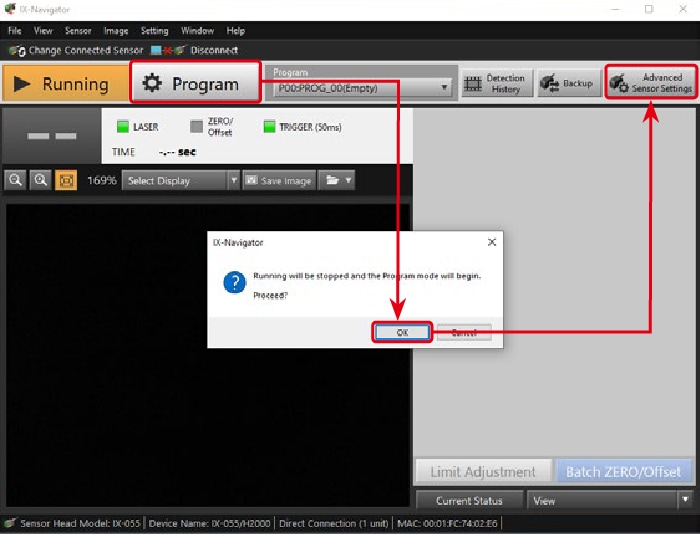
3. The [Advanced Sensor Settings] dialog box is displayed. Click the “Input” tab, and then select “Panel/PC/Comm. (DL)” under “Program Switch Method.”
* If you do not intend to switch the program number from the KV Series, this step is not necessary.
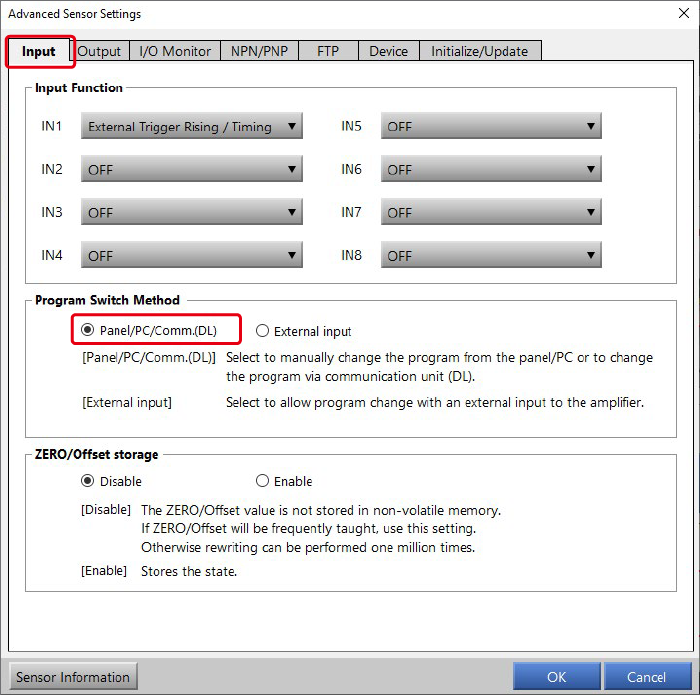
4. Click the “Device” tab. Click [Change] under “Communication unit (DL) settings.” The [Communication unit (DL) settings] dialog box is displayed. Assign measured values to outputs to be read by the KV Series, and then click [OK]. You can adjust settings and perform communication for up to 15 measured values (when using an expansion unit, the maximum is 15 measured values in total for the expansion unit and the main unit).
* If you do not intend to read measured values with the KV Series, this step is not necessary.
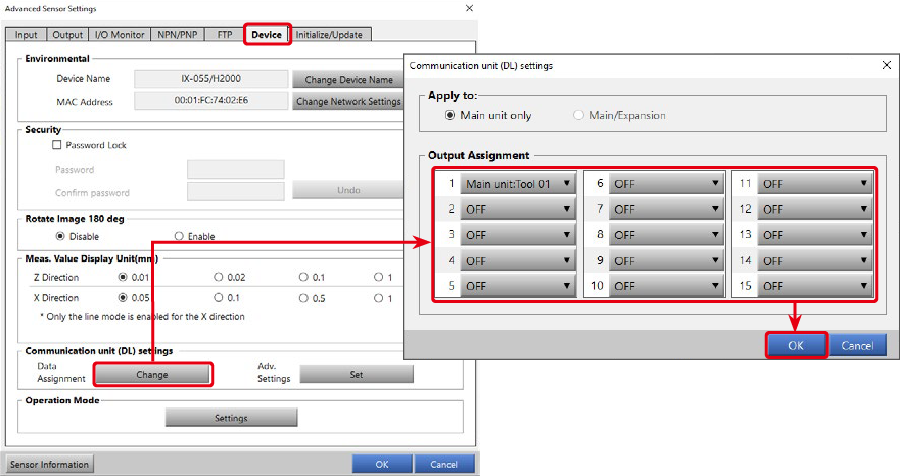
5. Click [Sensor Setup] to configure settings related to sensor detection and tools. For details on how to configure the settings, see the “IX Series User’s Manual.”
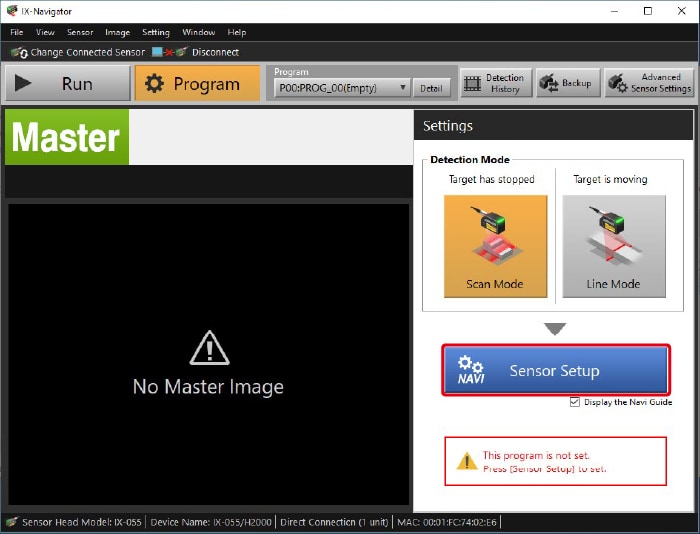
6. Click [ ▶ Run] to switch the sensor to run mode. Then, click [Disconnect] to complete the settings.
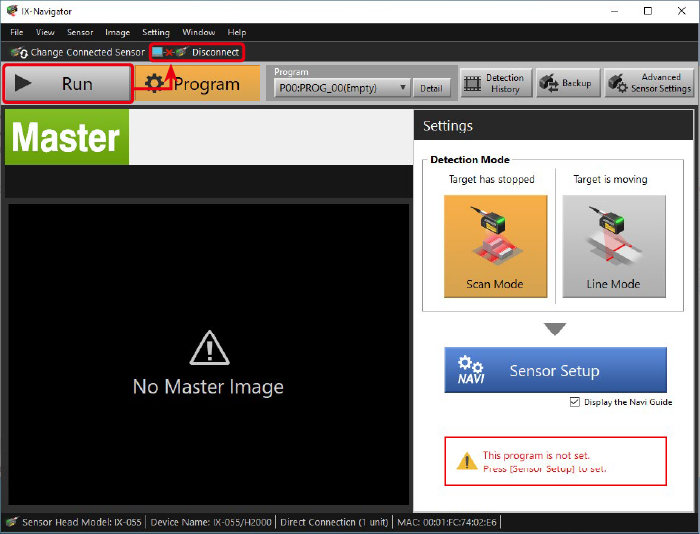
One point
Method for connecting by specifying the IP address
The explanation in this section uses the example of a case in which the following IP addresses are assigned to the PC and the IX Series:
PC ……… 192.168.0.200
IX Series ……… 192.168.0.5
* Set the PC IP address in advance.
1. Connect the Ethernet ports on the PC and the IX Series (the sensor amplifier) with a LAN cable, and then start IX-Navigator. The [Activation Menu] dialog box is displayed. Click [Network Connection] followed by [Search Sensor].
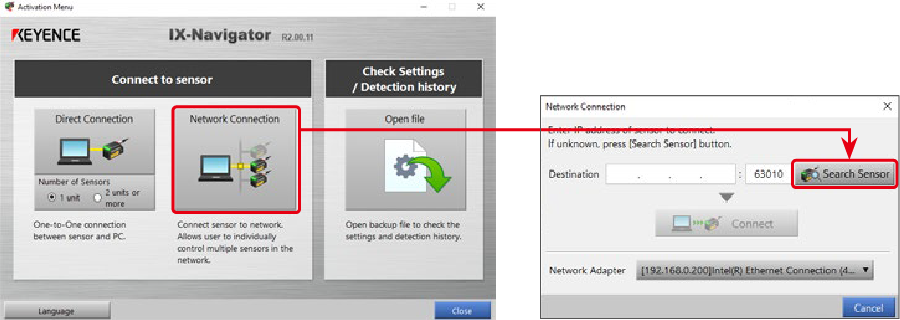
2. When the search is finished, the IX Series unit that is connected to the PC is displayed. Click [Connect]. If an IP address has already been set, the sensor settings screen will be displayed when you click [Connect].
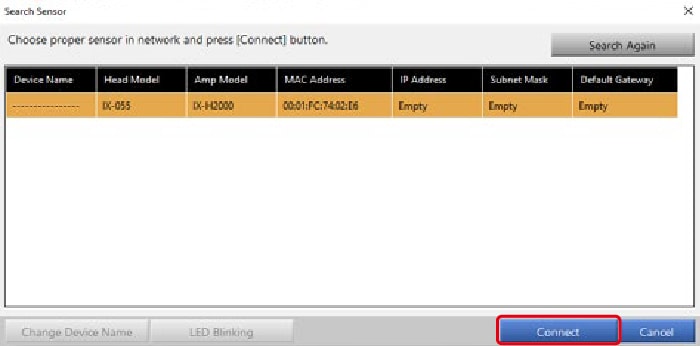
3. If no IP address has been set, the [Network Settings] dialog box is displayed. Set the IP address to assign to the unit. Configure the settings as shown below, and click [Connect] to display the sensor settings screen.
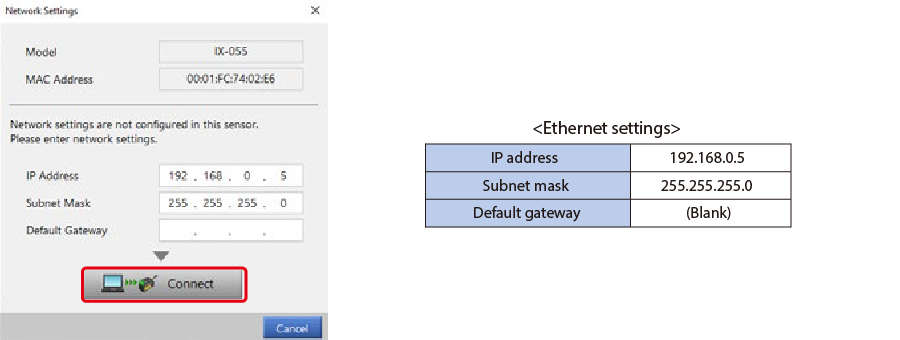
For subsequent sensor settings, see the information starting on “Step 2 : Configuring IX Series [EtherNet/IP] Settings”
Step 3 : KV-X Series Connection Settings
This section explains how to connect with a fictitious device called "Vendor Series". Replace the "Vender Series" with the device to be connected.
One point
For the KV Series with a CPU function version of 2.0 or later, variables can be assigned to the connection of EtherNet/IP.
When assigning variables to the connection of EtherNet/IP®, check the box of “Displays the variable setting dialog when updating the EtherNet/IP settings (E)” for “Other settings” of “System settings” on the “CPU system settings” dialog.
The “CPU system settings” dialog is displayed by selecting [Display (V)] ⇒ [CPU system settings (P)] from the ”KV STUDIO” menu.
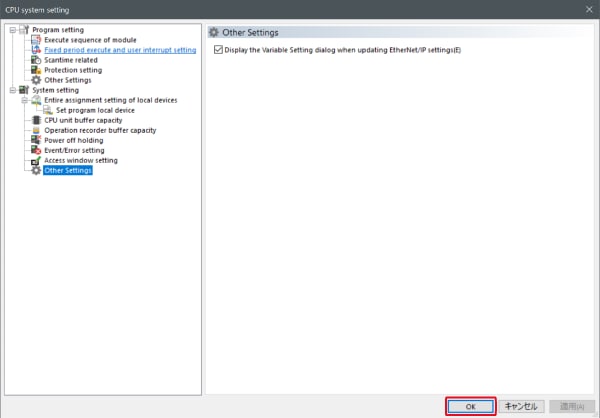
When the box of "Displays the variable setting dialog when updating the EtherNet/IP settings (E)" is checked, at the timing when the EtherNet/IP setting is updated and the changed content of the unit editor is confirmed, a dialog to assign variables to the connection is displayed.
1. Start up the KV STUDIO and create a new project. Set the model option to “KV-X520” and click [OK].
A [Confirm unit configuration setting] dialog box is displayed. Click [Yes (Y)].

2. The unit editor is displayed. On the “Setup unit(2)” tab, click the icon of EtherNet/IP setting. A configuration type selection dialog box is displayed. Click [Manual (M)].

3. On the “Unit setting (2)” tab, set the IP address for KV-X Series. In this example, configure the setting as shown below.
* Step 4 needs to be performed to import a sensor setting file. When the sensor setting file has already been imported, proceed to Step 5.

4. Select [EDS file (D)] → [Reg (I)] to import the KEYENCE sensor setting file(ez1 file) or EDS file.
* Download the sensor setting file from the KEYENCE website.

5. With the KV-X Series and the EtherNet/IP devices connected using the Ethernet cable, select [File (F)] → [Auto configuration (S)] on the [EtherNet/IP settings] window.
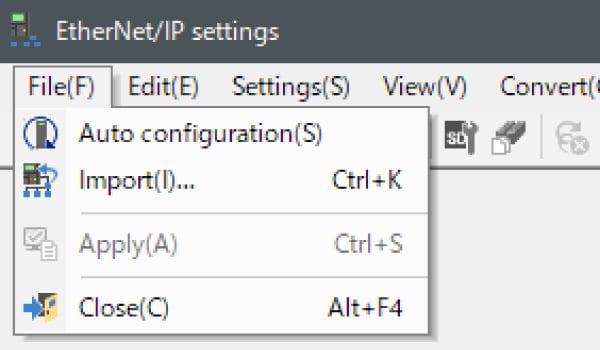
6. When the configuration on the unit editor differs from that of the actual device, a dialog for confirming transfer of the project is displayed. With the PC and KV-X Series connected using the USB cable, click [Yes (Y)].
7. When transfer of the project is completed, the [Search unit settings] dialog is displayed. Then click [Search (F)]. After the auto configuration is completed, "Vendor Series" is automatically registered. Then click [OK] to close the [EtherNet/IP settings] window.
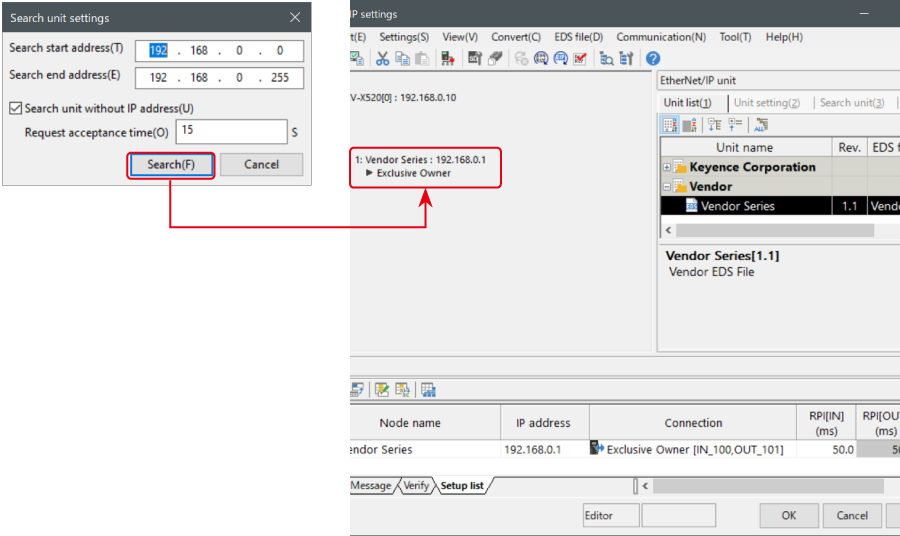
8. Click [OK] on the unit editor to exit.
One point
When the box of "Displays the variable setting dialog when updating the EtherNet/IP settings (E)" is checked, the [EtherNet/IP equipment Variable settings] dialog is displayed.
Enter the name of variable assigned to the connection, and click [OK].
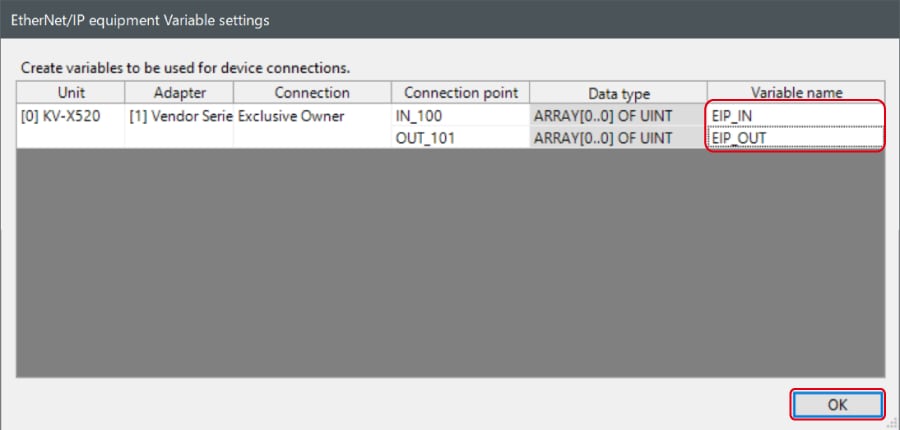
- The way of Device Configuration Settings manually
In the [Unit list (1)] tab of “EtherNet/IP Settings”, drag and drop "Vendor Series" and create a device configuration.
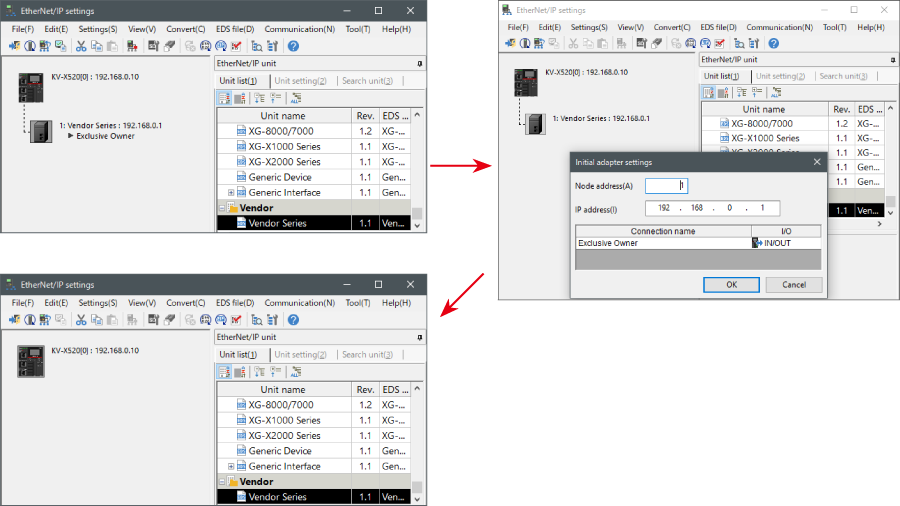
Transferring and Monitoring Setting Data
1. From the menu, select [Monitor/Simulator (N)] > [Transfer to PLC (W) → Monitor mode (C)].
In the [Send comm. cmd. to PLC] dialog box, click [Execute(E)].
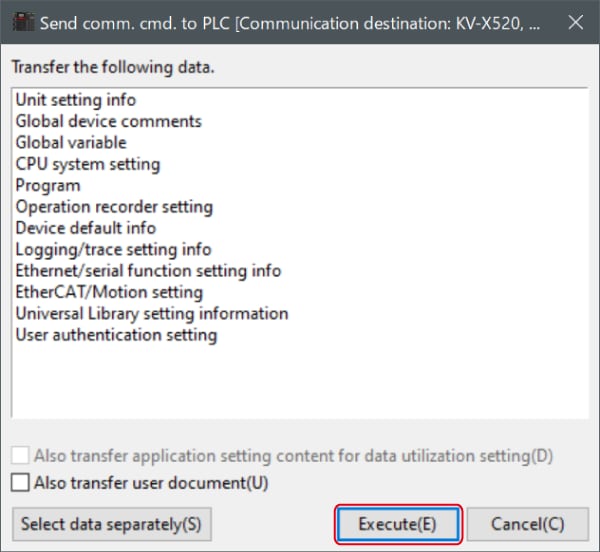
2. If the following dialog box is displayed before and after transferring the data, click [Yes] both times.

3. Right-click on “Vender Series” in the workspace, and select [Sensor IO monitor (M)].
Scores and other information can be easily monitored.
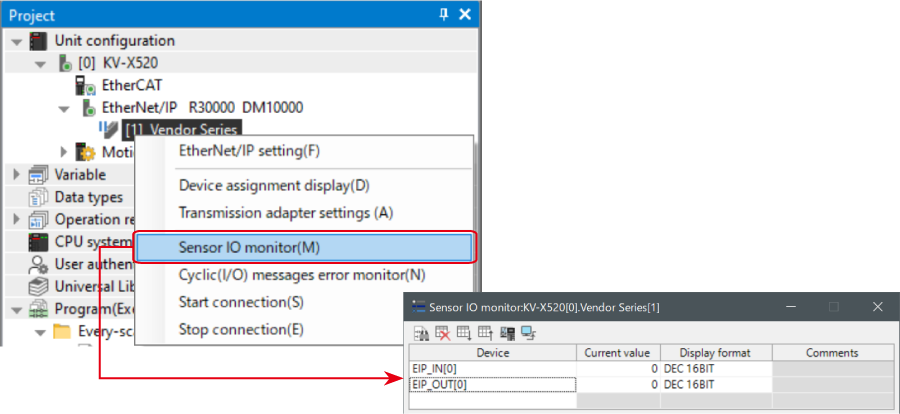
One point
The information can also be checked on a graph by starting up the real time chart monitor.
Right-click on “Sensor I/O monitor” and select [Real time chart monitor (H)].
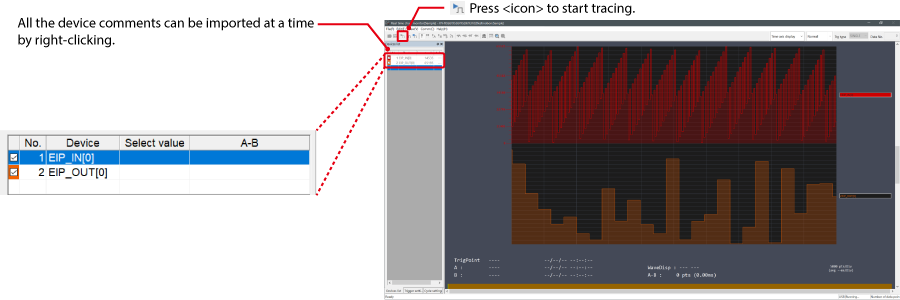
Range adjustment is not required since the real time chart monitor performs scaling automatically.
When Manipulating Parameters with a Program
Changing the Setting Values
The setting values of the sensors can be changed by the following two methods:
A : Change from a PC
B : Change from a ladder program
A : Change from a PC
To change the settings from a PC, use the transmission adapter function in KV STUDIO.
1. Expand the unit configuration in the workspace. Right-click on "Vender Series" and select [Transmission adapter settings (A)].

2. Place a check mark in Setting Value for "Vender Series" and enter the setting value.
Click [Write adapter (W)] to write the setting value to the sensor.
*To read the setting value of a sensor, select [Read adapter (R)].
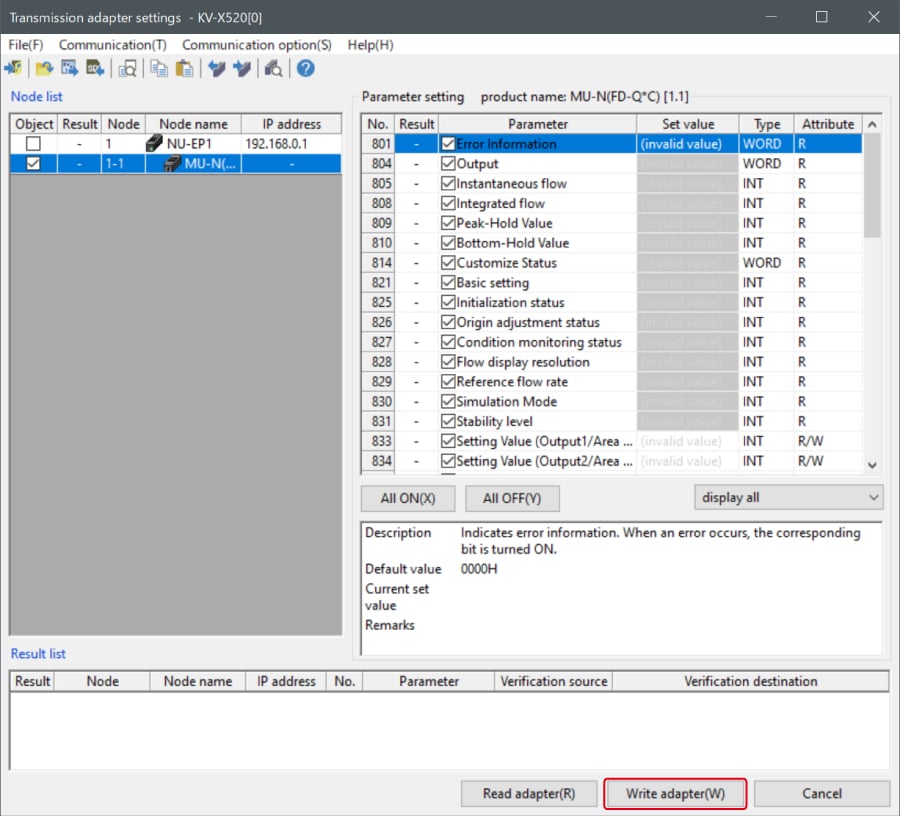
B : Changed from a ladder program
Use message communication to change the setting values from a ladder program.
To perform message communication with KV STUDIO, use the sensor setting commands (SPWR [sensor parameter write] and SPRD [sensor parameter read]).

1. In Editor mode, create a ladder program as shown below.
* For the parameter numbers, refer to Parameter list.

2. Transfer the ladder program.
3. When MR100 is turned on, the setting value is changed.
* Store the setting value in DM4 ([Leading device to store results] + 4).
One point
RT (Real-Time) Edit function
When you use a ladder program, you can input device comments or parameter names directly to have input candidates be searched for and displayed automatically.

Step 4 : Creating the Ladder Program
Program switch
A reference program for switching the IX Series program number is shown below.
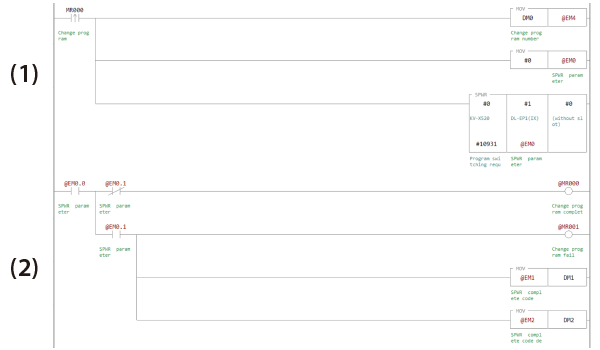
Mnemonic list
LDP MR000 MOV DM0 @EM4 MOV #0 @EM0
SPWR #0 #1 #0 #10931 @EM0 LD @EM0.0
MPS
ANB @EM0.1 OUT @MR000 MPP
AND @EM0.1 OUT @MR001 MOV @EM1 DM1 MOV @EM2 DM2
(1) The IX Series program number is switched to the number stored in DM0 on the rising edge of MR000.
(2) When the program switch is successful, @MR000 is turned ON. If the program switch fails, @MR001 is turned ON and the completion code and the detailed completion code are stored in DM1 and DM2, respectively.
* To check that the program number has been switched, use the SPRD command to read the current program number. Please note that it takes approximately 1 second from the execution of the SPWR command to the actual switching of the IX Series program number.
One point
Execute SPWR (sensor parameter writing command)/SPRD (sensor parameter reading command) to write/read the parameters of the specified sensor.
